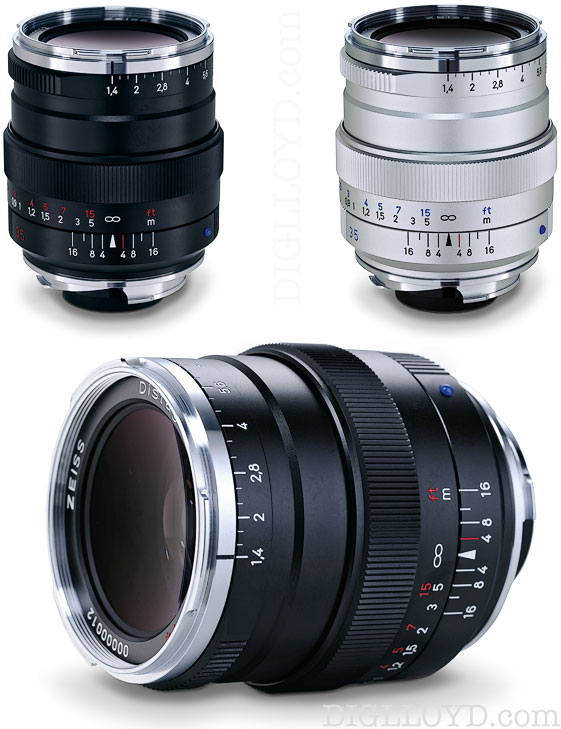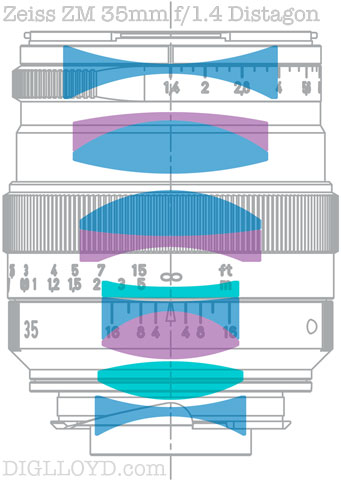EXCERPT page containing first few paragraphs. 2024-04-24 05:57:58
UA_SEARCH_BOT_compatible_botmozilla/5.0 applewebkit/537.36 (khtml, like gecko; compatible; claudebot/1.0; +claudebot@anthropic.com) @ 18.226.150.175
For full access, subscribe here. Or click title to login. ![]()
Zeiss ZM 35mm f/1.4 Zeiss Distagon
Debuting in late 2014, the Zeiss ZM 35mm f/1.4 Distagon is a rangefinder lens that looks to be the best performer yet among 35mm rangefinder lenses. Of particular note:
- Exceptional control of field curvature with outstanding contrast and sharpness across the field even wide open.
- Very low distortion hardly visible even on the straight lines of architecture.
- 10-bladed aperture with 1/3 stop aperture clicks (versus 1/2 stop clicks for Leica). Moreover the clicks are solid, not wimpy and indistinct as many Leica M lenses tend to be.
- Very strong efforts for flare control.
Its Distagon design suggests a relatively digital friendly ray angle behavior on mirrorless cameras, but in fact its ray angle is identical to that of the existing 35mm f/2 Biogon, so its performance at the periphery at wide apertures is strongly impaired on mirrorless cameras as with other Zeiss ZM and Leica M rangefinder lenses.
Article continues for subscribers...
Diglloyd Guide to Leica is by yearly subscription. Subscribe now for about 25 cents a day ($90/year).
BEST DEAL: get full access to ALL 8 PUBLICATIONS for about 75 cents a day!
Diglloyd Guide to LEICA contains in-depth coverage of Leica M system cameras and lenses, with additional coverage of Leica M Monochrom, Leica Q.
Special emphasis is placed on Leica M lenses and certain Zeiss ZM lenses.
- Make better images by learning how to get the best results right away.
- Save money by choosing the right lens for your needs the first time, particularly the Summilux/Summicron/Elmarit choice and/or Zeiss ZM.
- Make better images, a sort of “cheat sheet” saving yourself months or years of ad-hoc learning. Processing parameters are discussed and shown.
- Jaw-dropping image quality found nowhere else utilizing Retina-grade images up to full camera resolution, plus large crops [past 2 years or so].
- Real world examples with insights found nowhere else. Make sharper images just by understanding lens behavior you won’t read about elsewhere.
- Aperture series from wide open through stopped down, showing the full range of lens performance and bokeh.
- Optical quality analysis of field curvature, focus shift, sharpness, flare, distortion, and performance in the field.
Want a preview? Click on any page below to see an excerpt as well as extensive blog coverage, for example on Leica.



